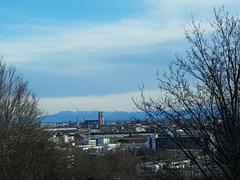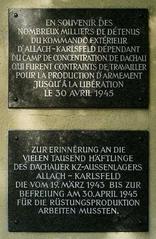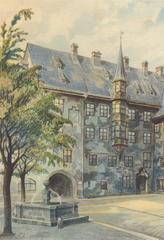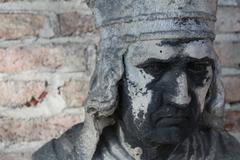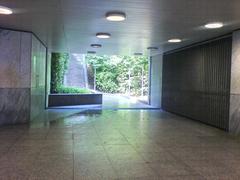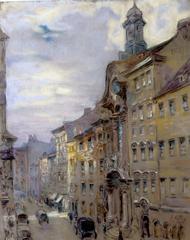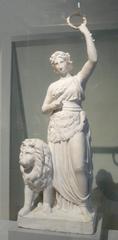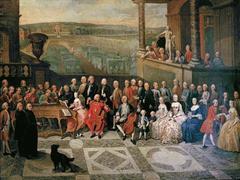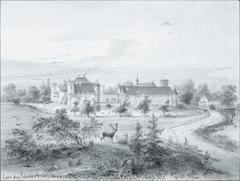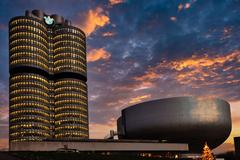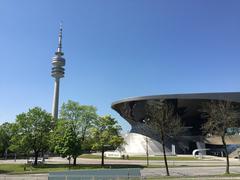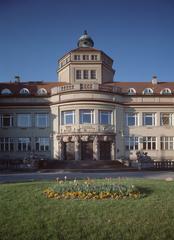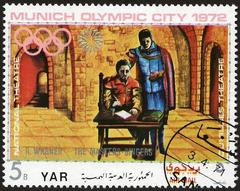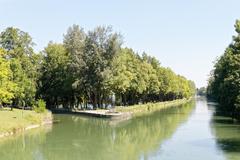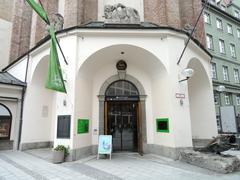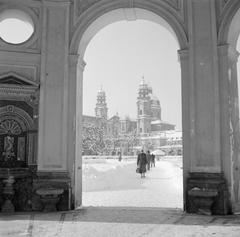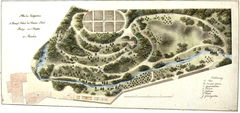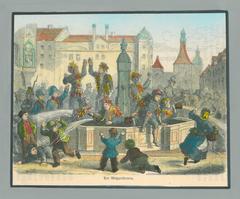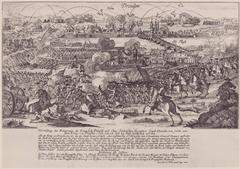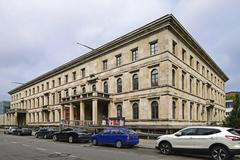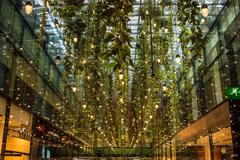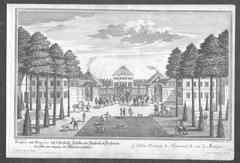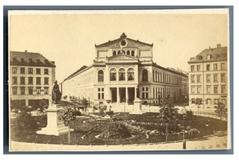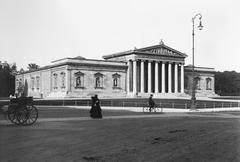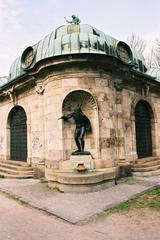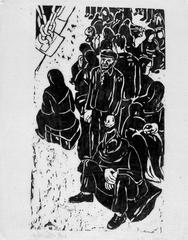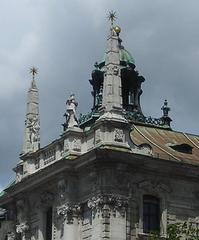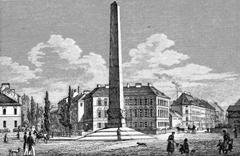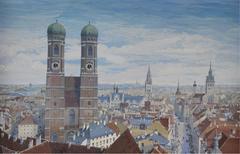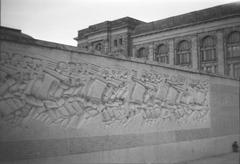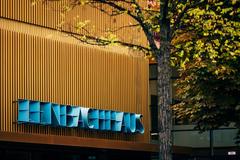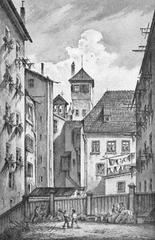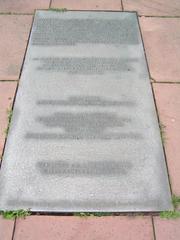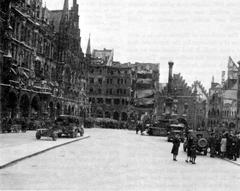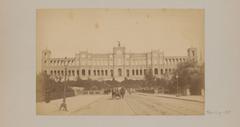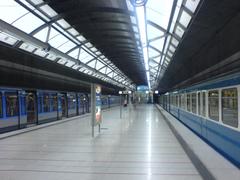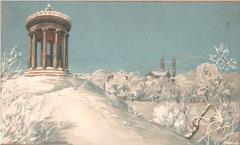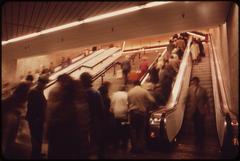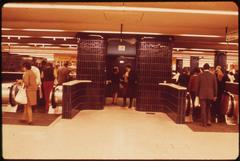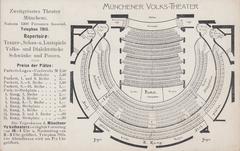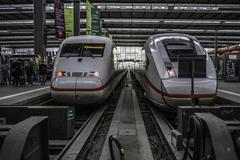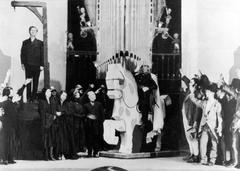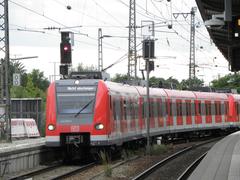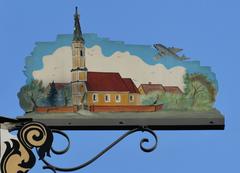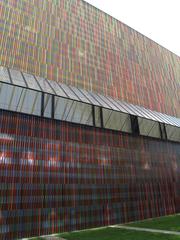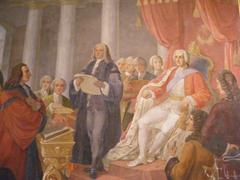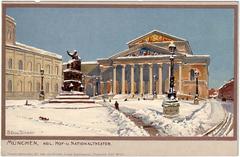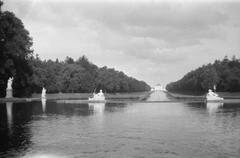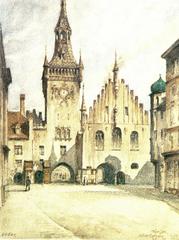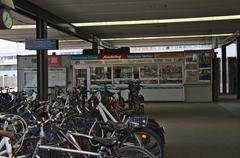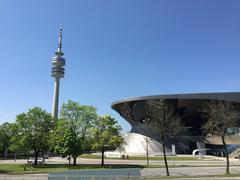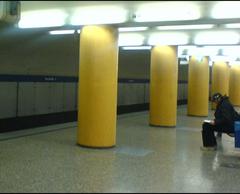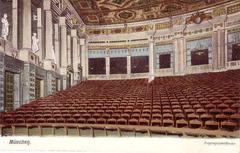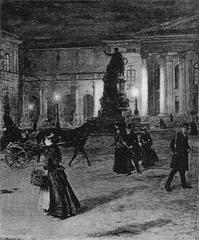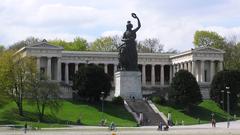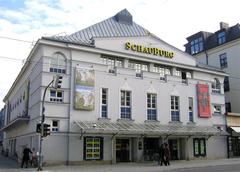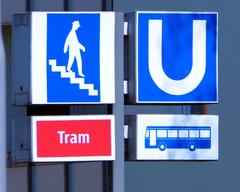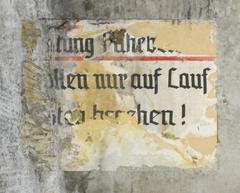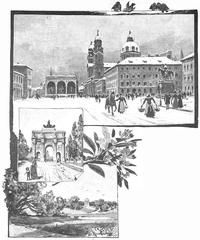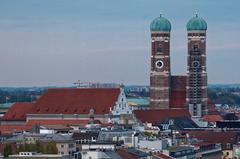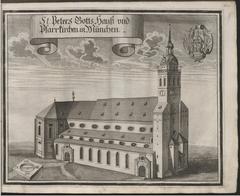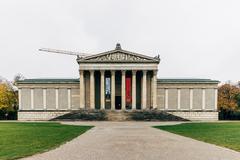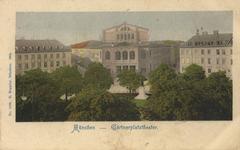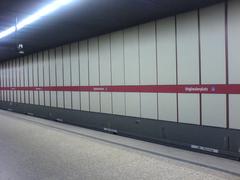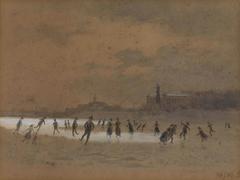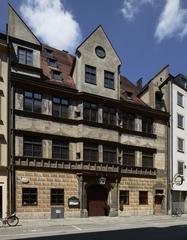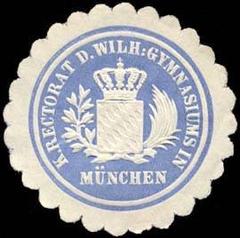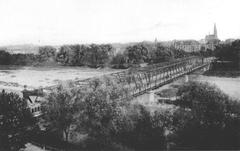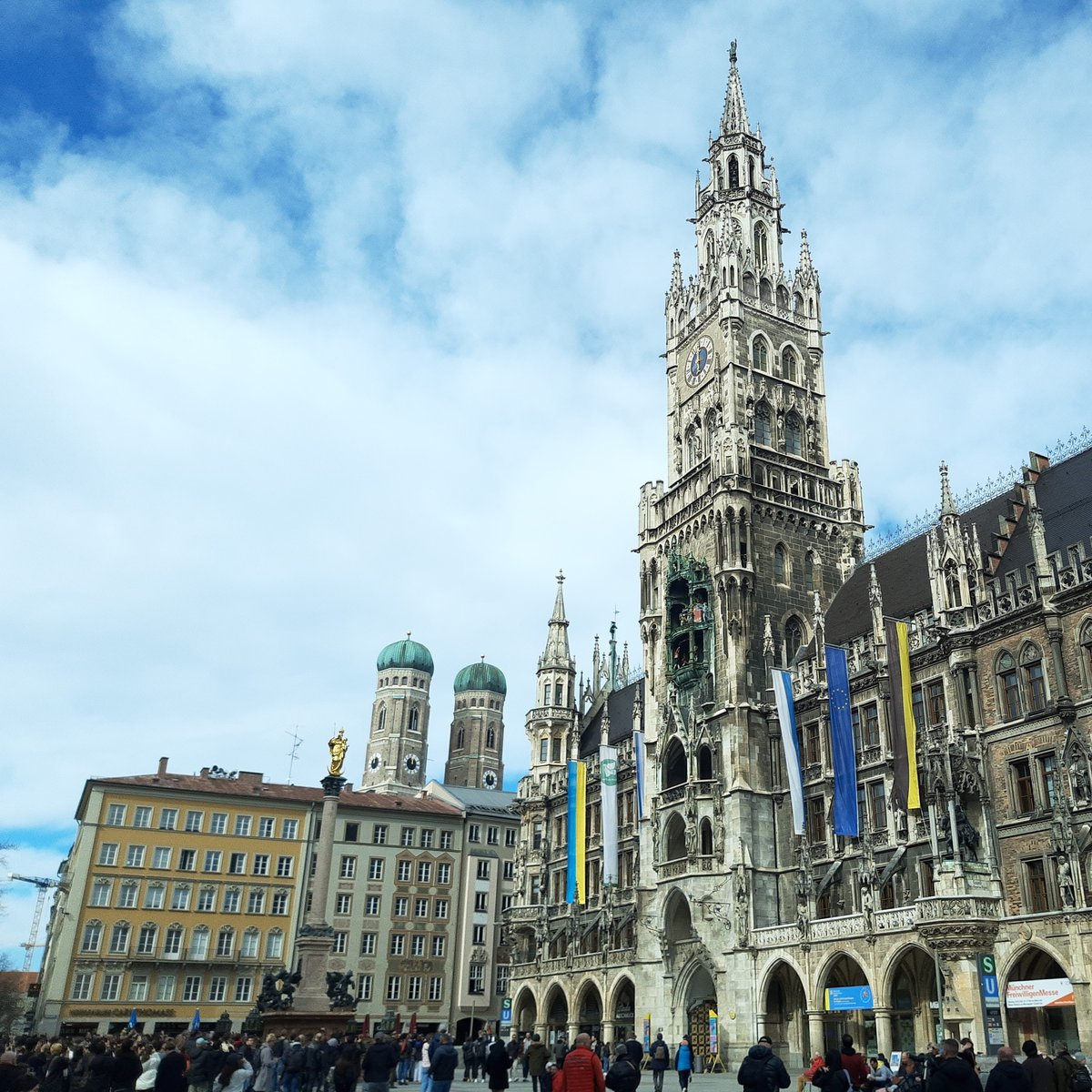
Visiting Frauenkirche: Hours, Tickets, and Travel Tips
Date: 17/07/2024
Introduction
Discover the rich history and architectural marvel of the Frauenkirche, officially known as the Cathedral of Our Dear Lady, an iconic landmark situated in Munich, Germany. The Frauenkirche stands as a prime example of late Gothic architecture, with its distinctive twin towers capped with onion domes, a feature added in the 16th century (Munich Tourism). This cathedral not only serves as a significant place of worship but also as a historical monument that has witnessed pivotal moments in Munich’s history, including the coronation of Bavarian kings and the signing of important treaties (Munich History). From its origins in the 15th century, spearheaded by architect Jörg von Halsbach, to its resilience through the devastation of World War II and subsequent reconstruction, the Frauenkirche continues to captivate visitors with its grandeur and historical depth (Bavaria.by). This comprehensive guide aims to provide you with essential information, including visiting hours, ticket details, and insider tips to make your visit to the Frauenkirche a memorable experience.
Table of Contents
- Introduction
- History of Frauenkirche, Munich
- Modern-Day Significance
- Visitor Tips
- Notable Art and Artifacts
- Preservation Efforts
- Cultural Impact
- Future Developments
- FAQ
- Conclusion
History of Frauenkirche, Munich
Origins and Construction
The Frauenkirche, officially known as the Cathedral of Our Dear Lady (Dom zu Unserer Lieben Frau), is a landmark of Munich, Germany. Its construction began in 1468 under the direction of Jörg von Halsbach, a renowned architect of the time. The church was built on the site of an older, smaller church that dated back to the 12th century. The foundation stone was laid by Duke Sigismund of Bavaria, who played a significant role in the church’s development (Munich Tourism).
Architectural Features
The Frauenkirche is notable for its distinctive twin towers, which reach a height of 99 meters. These towers are capped with onion domes, a feature added in the 16th century, which has since become a symbol of Munich. The church’s design is a prime example of late Gothic architecture, characterized by its brick construction and the use of flying buttresses to support the high vaulted ceilings. The interior of the church is equally impressive, with a nave that stretches 109 meters in length and 40 meters in width (Bavaria.by).
Historical Significance
The Frauenkirche has played a pivotal role in Munich’s history. It served as the burial site for members of the Wittelsbach dynasty, the ruling family of Bavaria. Notably, the tomb of Emperor Ludwig IV, also known as Ludwig the Bavarian, is located within the church. The Frauenkirche also witnessed significant historical events, including the coronation of Bavarian kings and the signing of important treaties (Munich History).
World War II and Reconstruction
During World War II, the Frauenkirche suffered extensive damage from Allied bombing raids. The roof collapsed, and much of the interior was destroyed. However, the twin towers remained standing, serving as a symbol of resilience for the people of Munich. The post-war reconstruction efforts were extensive, with the church being restored to its former glory by 1953. The restoration work focused on preserving the original Gothic elements while incorporating modern techniques to ensure the structure’s stability (Deutsche Welle).
Modern-Day Significance
Today, the Frauenkirche remains an active place of worship and a major tourist attraction. It is the seat of the Archbishop of Munich and Freising, making it an important center for the Catholic Church in Bavaria. The church also hosts numerous cultural events, including concerts and art exhibitions, further cementing its role as a cultural hub in Munich (Archdiocese of Munich and Freising).
Visitor Tips
Opening Hours and Admission
The Frauenkirche is open to visitors daily, with specific hours varying depending on the season. Admission to the church is free, although donations are encouraged to support ongoing maintenance and restoration efforts. Visitors are advised to check the official website for the most up-to-date information on opening hours and any special events that may affect access (Frauenkirche Official Site).
Guided Tours
Guided tours are available and provide an in-depth look at the church’s history, architecture, and art. These tours are offered in multiple languages and can be booked in advance. Special tours focusing on specific aspects of the church, such as its role in Bavarian history or its architectural features, are also available (Munich Tourism).
Accessibility
The Frauenkirche is accessible to visitors with disabilities. Ramps and elevators are available to ensure that all areas of the church can be reached. Special accommodations can be arranged for those with specific needs, and it is recommended to contact the church in advance to make any necessary arrangements (Bavaria.by).
Nearby Attractions
The Frauenkirche is located in the heart of Munich, making it an ideal starting point for exploring the city’s other attractions. Nearby sites include the Marienplatz, the New Town Hall (Neues Rathaus), and the Viktualienmarkt, a famous food market. Visitors can easily spend a day exploring the rich history and vibrant culture of Munich’s city center (Munich Tourism).
Notable Art and Artifacts
The Frauenkirche houses several notable works of art and historical artifacts. Among these is the Teufelstritt, or Devil’s Footstep, a mysterious footprint embedded in the floor near the entrance. Legend has it that the footprint was left by the devil himself, who was tricked by the architect into believing that the church had no windows. Other significant artworks include the high altar, designed by Friedrich von Gärtner, and the numerous stained glass windows that depict scenes from the Bible and the lives of saints (Munich History).
Preservation Efforts
Ongoing preservation efforts are crucial to maintaining the Frauenkirche’s structural integrity and historical significance. The church undergoes regular inspections and maintenance to address any issues related to its age and the wear and tear from millions of visitors each year. Recent projects have focused on restoring the stained glass windows and repairing the roof to prevent water damage. These efforts are funded through a combination of public funds, private donations, and support from the Catholic Church (Deutsche Welle).
Cultural Impact
The Frauenkirche has had a lasting impact on the cultural landscape of Munich. It is featured prominently in local folklore and has inspired numerous works of art, literature, and music. The church’s iconic silhouette is a common motif in Bavarian art and is often used to represent the city of Munich in various media. Additionally, the Frauenkirche has been the subject of academic studies and research, further highlighting its importance as a cultural and historical landmark (Archdiocese of Munich and Freising).
Future Developments
Looking ahead, the Frauenkirche continues to evolve while preserving its historical essence. Plans are in place to enhance the visitor experience through the use of modern technology, such as virtual tours and interactive exhibits. These initiatives aim to make the church’s rich history more accessible to a global audience. Additionally, efforts are being made to increase community engagement through educational programs and cultural events, ensuring that the Frauenkirche remains a vibrant and integral part of Munich’s heritage (Frauenkirche Official Site).
FAQ
Q: What are the Frauenkirche visiting hours?
A: The visiting hours for Frauenkirche vary by season. It is advisable to check the official Frauenkirche website for the most current hours.
Q: Is there an admission fee for Frauenkirche?
A: Admission to Frauenkirche is free, but donations are encouraged to support maintenance and restoration.
Q: Can I book a guided tour of Frauenkirche?
A: Yes, guided tours are available in multiple languages and can be booked in advance.
Q: Is Frauenkirche accessible to visitors with disabilities?
A: Yes, the church is accessible and offers ramps and elevators. Special accommodations can be arranged in advance.
Q: What other attractions are near Frauenkirche?
A: Nearby attractions include Marienplatz, the New Town Hall, and Viktualienmarkt.
Conclusion
The Frauenkirche is not just a remarkable architectural feat but also a symbol of Munich’s resilience and cultural heritage. From its early beginnings in the 15th century to its role as a pivotal site of historical events, the cathedral has stood the test of time, emerging stronger from the ruins of World War II. Today, it continues to serve as a vibrant center for worship, culture, and community engagement, hosting numerous events and attracting visitors from around the globe (Deutsche Welle). Whether you’re drawn by its architectural beauty, historical significance, or cultural impact, the Frauenkirche offers an enriching experience that encapsulates the essence of Munich. As you plan your visit, take advantage of the guided tours, explore the nearby attractions, and immerse yourself in the rich history and beauty of this iconic cathedral. By understanding its past and present, you can fully appreciate why the Frauenkirche remains a cherished landmark in Munich (Archdiocese of Munich and Freising).
References
- Munich Tourism. (n.d.). Frauenkirche. https://www.muenchen.de/sehenswuerdigkeiten/orte/120345.html
- Bavaria.by. (n.d.). Frauenkirche. https://www.bavaria.by/experiences/city-country-culture/churches-cathedrals/frauenkirche-munich/
- Munich History. (n.d.). Frauenkirche. https://www.muenchen.de/int/en/sights/churches/frauenkirche.html
- Deutsche Welle. (n.d.). Munich’s Frauenkirche: A Symbol of Resilience. https://www.dw.com/en/munichs-frauenkirche-a-symbol-of-resilience/a-19412345
- Archdiocese of Munich and Freising. (n.d.). Frauenkirche. https://www.erzbistum-muenchen.de/

